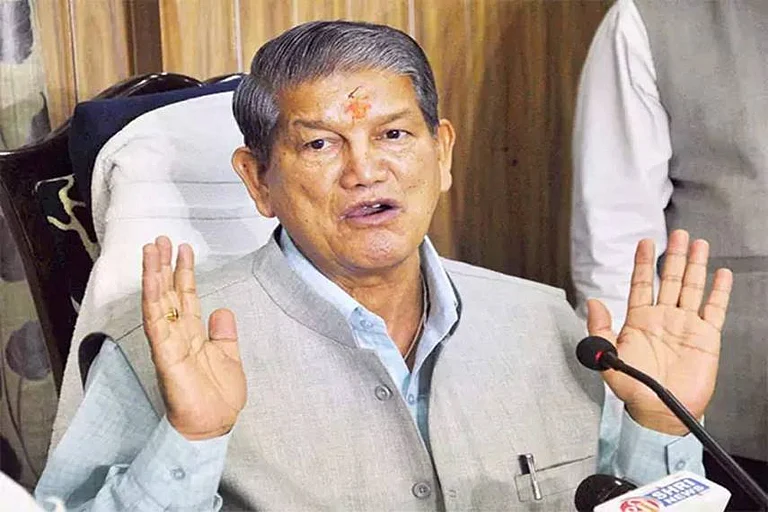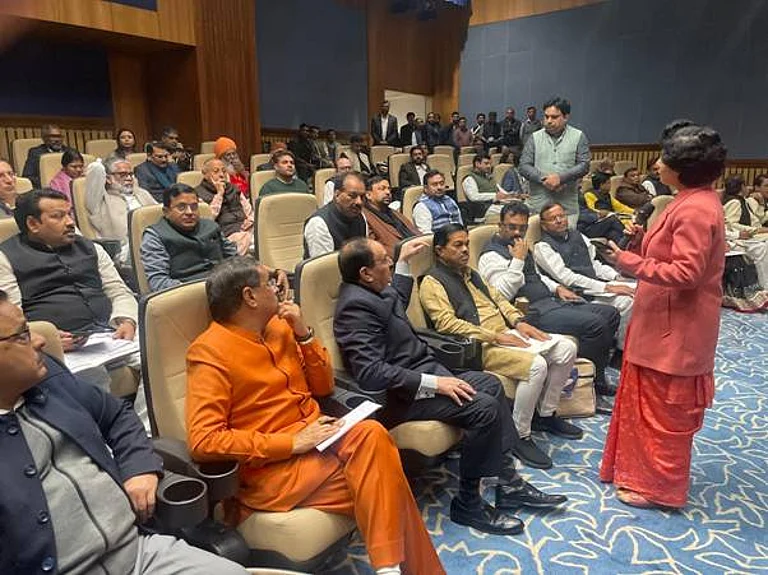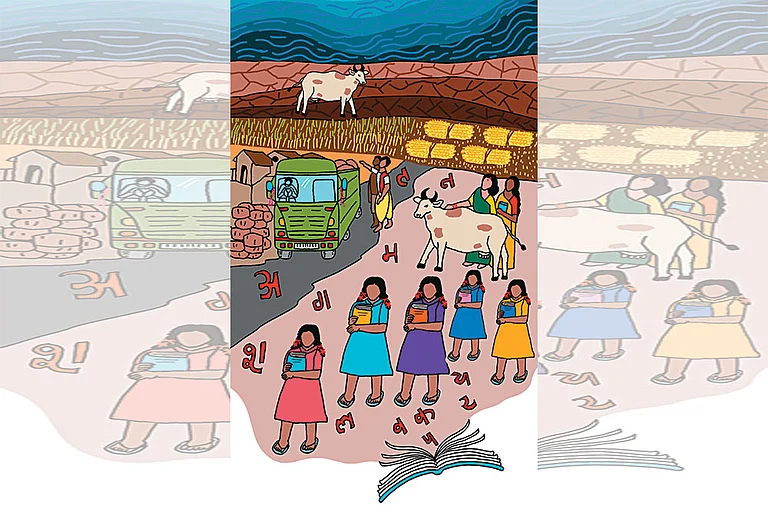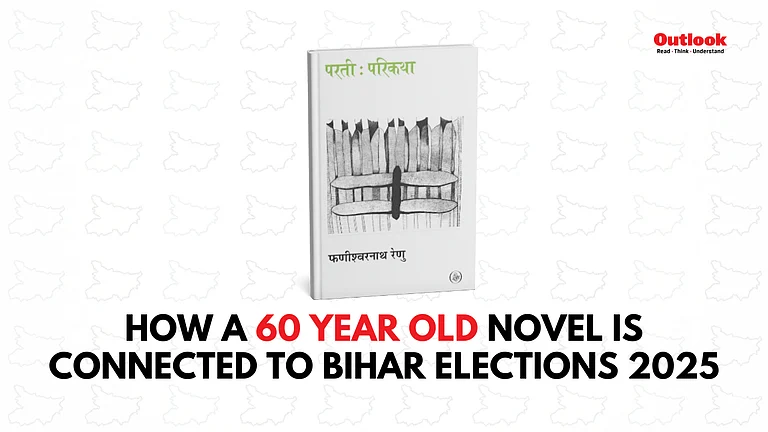The Congress party released its manifesto, on April 5 in Delhi, for the upcoming general elections. During the press conference, former party president, Rahul Gandhi referred to the 2004 general elections and the ‘India Shining’ campaign run by the Bharatiya Janata Party (BJP) back then. Can there be a repeat of 2004 in 2024? Only the results will tell. But for now a short stroll down the history lane could bring out some interesting aspects of the Indian politics.
Twenty years apart, Indian politics is back on, not the same, but similar, crossroad. The largest democracy in the world is days away from being engulfed in the general elections. Like 2004, BJP is in power, although with a much greater and centralised manner; and the opposition is trying to overthrow it with all its might, whatever is left of it. But compared to 2004, this time around the election game is much bigger and bitter. However, a big similarity between then and now is that BJP, more specifically the PM, is made out to be invincible by the party and sections of media albeit the current scale of this exercise is enormous compared to twenty years ago.
In 2004, the Atal Bihari Vajpayee government decided to absolve the 13th Lok Sabha a few months early, and go into polls. The BJP was riding on the success of assembly elections held in Madhya Pradesh, Rajasthan and Chhattisgarh in 2003. It is said that the then deputy Prime Minister Lal Krishna Advani and the then party President M. Venkaiah Naidu were particularly in favour of going for the polls before time. Although, later on, many reports suggested that Vajpayee was not so keen on this move and the ‘India Shining’ campaign his government launched to popularise its achievements. In fact, Vajpayee’s close confidant Shiv Kumar Pareek later revealed that the former PM was not as confident of the victory as the other leaders were and had even predicted defeat.
Political outcome aside the move to prepone the general elections in India changed their weather, both literally and metaphorically.
‘India Shining’ Campaign
The BJP-led National Democratic Alliance (NDA) government gave the slogan of ‘India Shining’ to paint the overall ‘feel good’ picture of their rule. The campaign presented a glossy picture of the overall developmental projects in India under NDA; a PR firm was hired for the campaign.
Reportedly, Rs 150 Cr of exchequer’s money was doled out for the 120-day campaign which included advertisements in press, television, and on billboards. Anyone old enough to remember those days can recount the huge advertisements in national and local newspapers or 24x7 news channels on TV; if one escaped these the streets were donned with huge billboards shining upon the people to ensure the government’s achievements and claims were being engraved in their minds.

In 2003, India had witnessed the best monsoon in the previous decade, which led to a 10 per cent growth in the economy in the last quarter making it the fastest growing one in Asia. With a large section of population dependent on agriculture, this was bound to add to the ‘feel good’ factor that was being popularised under the India Shining campaign.
This immediate, positive news was not the only reason for Vajpayee government’s confidence. There were some other feathers in their hat like the Sarva Siksha Abhiyan, which ensured free and mandatory education for children from 6-14 age group; this scheme later became a tool to implement Right to Education under the UPA. The ambitious Golden Quadrilateral scheme, longest highways to connect the four major cities; it was the fifth longest highway project in the world back then. Similarly, connectivity in rural areas, under Pradhan Mantri Gram Sadak Yojana, was also improved. All these schemes got mention in the India Shining campaign.
Besides this, Vajpayee’s image was also positive among the people. He was the first non-Congress PM to finish his term and was liked by even his opponents. Banking on his image, the BJP promised a stable government. His image was also a big part of the India Shining campaign.
The campaign seemed to be selling in some sections; it reflected the stable growth of the country’s economy for the past few years. To further reinforce the growth narrative and ‘feel good’ factor, LK Advani announced the ‘Bharat Uday Yatra’; this time his ‘rath’ was a high-tech bus.
During its tenure, the Vajpayee government further pushed the economic reforms which began in early 1990s with more disinvestment in public sector; it established a separate ministry for disinvestment. Simultaneously, the consolidation of majority votes on religious lines was on track. This convergence of economic and ideological aspects made the Vajpayee government more acceptable in sections of Indian society whose aspirations were growing with the ever-expanding globalisation process.
Political analysts, opinion polls and sections of media were all predicting a come-back for the NDA government for a second innings. All opinion polls at the time had predicted that the NDA will win, but the results were a complete opposite.
Opposition’s Campaign
On the other hand, the opposition including Congress cornered the BJP on issues like price rise, lack of government jobs, increasing privatisation of essential sectors like health and education. Even with the economic boom, there was still a large section of Indian population which was impoverished and was struggling to make ends meet. India’s - Centre and states consolidated - fiscal deficit had reached very high rate of 10 per cent. It seemed that India was not shining as much as the ruling party was claiming.
The results came and the NDA lost. It was said that the ‘India Shining’ campaign didn’t resonate with the marginalised sections that were still living in the dark. The whole campaign backfired on the incumbent BJP. On the contrary, Congress’ campaign was centered around what did the common man get? They coined the slogan ‘Congress ka Haath, Aam Aadmi ke Saath’ (roughly translates as Congress with the common man).
One of the biggest surprises in the 2004 results was that the Left parties managed to win around 60 seats; their highest tally ever. The Communist Party of India (Marxist) [CPI (M)] brought out data based documents to counter the claims of ‘India Shining’. The CPI (M) attacked the BJP on unemployment, decline in government expenditure for rural sector, policies only for the benefits of big business etc. All in all, they focused on the fact that the development was uneven and did not reach the majority of the population.
Besides the unequal reach of economic development of the country, the opposition also had the idea of secularism on their side. Gujarat had witnessed the communal riots in 2002. The opposition amplified the need to guard the constitutional idea of secularism.
United Progressive Alliance (UPA)
Once the results were announced, the opposition formed a post-poll alliance – United Progressive Alliance (UPA). Apart from parties like Congress, Samajwadi Party, and Rashtriya Janata Dal, the Left Front with their 59 MPs supported the government from outside. UPA was formed on a Common Minimum Programme (CMP) which included strengthening of social harmony, welfare programmes for working class, farmers, women, dalits etc. Left leaders like Jyoti Basu and Harkishan Singh Surjeet were instrumental in formation of UPA and drafting of CMP. This reflected in the major achievements of the UPA government in their first tenure like Right to Education, MGNREGS etc.
The 2004 elections results reinforced the importance of reading the silent undercurrents of the Indian politics. Even when the surface is banging with the deafening sounds of money-power infested unrealistic campaigns, it is the silent voters who decide the fate of all political parties. The journey between confidence and over-confidence in politics is dangerous and leads to the illusion of invincibility.

























